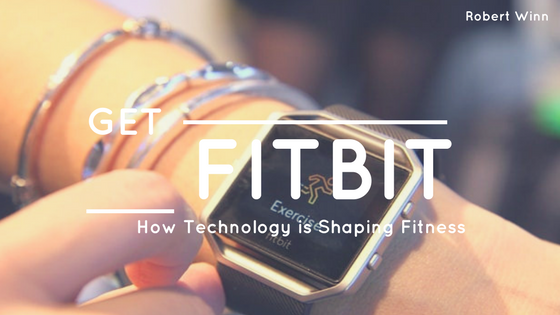You stand at one end of a long, green football field and stare down the long stretch of grass. Focused, you stretch in a few quick motions, pausing for one last breath before you leap into motion. Your feet slam onto the turf as you sprint the hundred yards to the other end of the field; you skid to a halt and whip the wrist with your wearable fitness device up to your face, panting.
The numbers blink in front of you: 3 calories burned.
Victorious, you eat the singular (3-calorie) M&M you’ve been saving.
Lately, it seems impossible to drop a weight ball or unroll a yoga mat without somehow whacking a person wearing a FitBit or smartwatch. According to statistics published by Forbes, Forbes, 1 in 6 American adults own and use wearable technology, and 48% are young (between the ages of 18-34). For better or worse, technology has become a commonplace and, in many ways, a revolutionary part of how we exercise.
For many, the emergence of fitness tech has been decidedly beneficial, especially for those without workout partners to help keep up motivation. Fitness apps are designed to help inexperienced users set achievable goals and keep to them. While it might have once been easy to shut off an early alarm and prioritize that extra 45 minutes of sleep over a morning jog, today’s wearable tech provides continual alerts, encouragements, and reminders that push users to stay honest and keep to their fitness plans. Wearable tech may not be a full-scale replacement for (human) trainers in a world of YouTube tutorials and app-driven fitness plans, but it certainly comes close.
That 24/7 accountability and service is one of wearable tech’s greatest draws for the unenthusiastically athletic: devices provide needed support and guidance, tracks performance, and keeps users hooked with interactive games and features. For those who look to fitness apps for motivation, workouts cannot simply be strenuous; they need to be engaging and entertaining as well. Even VR fitness programs may be on the horizon – Oculus released a number of exercise games for their devices in January of this year.
It’s hard to deny that wearable fitness tech has served as a positive motivating force for otherwise unenthused and unengaged users; but are all of its effects beneficial?
The question is a significant one given that, as Euan Ashley, a Stanford-based professor who studies cardiovascular medicine, genetics and biomedical data science noted in an article for Entrepreneur Magazine: “People are basing life decisions on the data provided by these devices.” In late May, Ashley ran a study on the accuracy of fitness wearables and found that the tracking devices produced shockingly inaccurate results when they attempted to calculate the number of calories burned during a workout. These inaccuracies may be irking from a consumer’s perspective, but they become downright concerning when one considers Ashley’s observations of users’ warped decision-making.
If a user begins to base their food intake off of a wearable’s inaccurate readings, they may begin to slide into unhealthy eating habits. Individuals process calories differently depending on a myriad of factors, including genetics. Proper nutrition entails more than maintaining a certain calorie-to-workout ratio; however, an excess of faith in an app could potentially lead to unhealthy eating and fitness habits.
In the end, fitness apps are a mixed bag. They serve as wonderful motivators and guides for inexperienced would-be athletes, but they can’t be expected to run our fitness lives. So, eat a handful of M&Ms because you want to – not because a wearable determined that the proper number of calories were burned to allow the intake. Pursue a healthy lifestyle by researching how to eat nutritiously and incorporating regular exercise into your routine. Health is more than a number on a screen – so consider what your body needs to be well, instead of “fit.”

